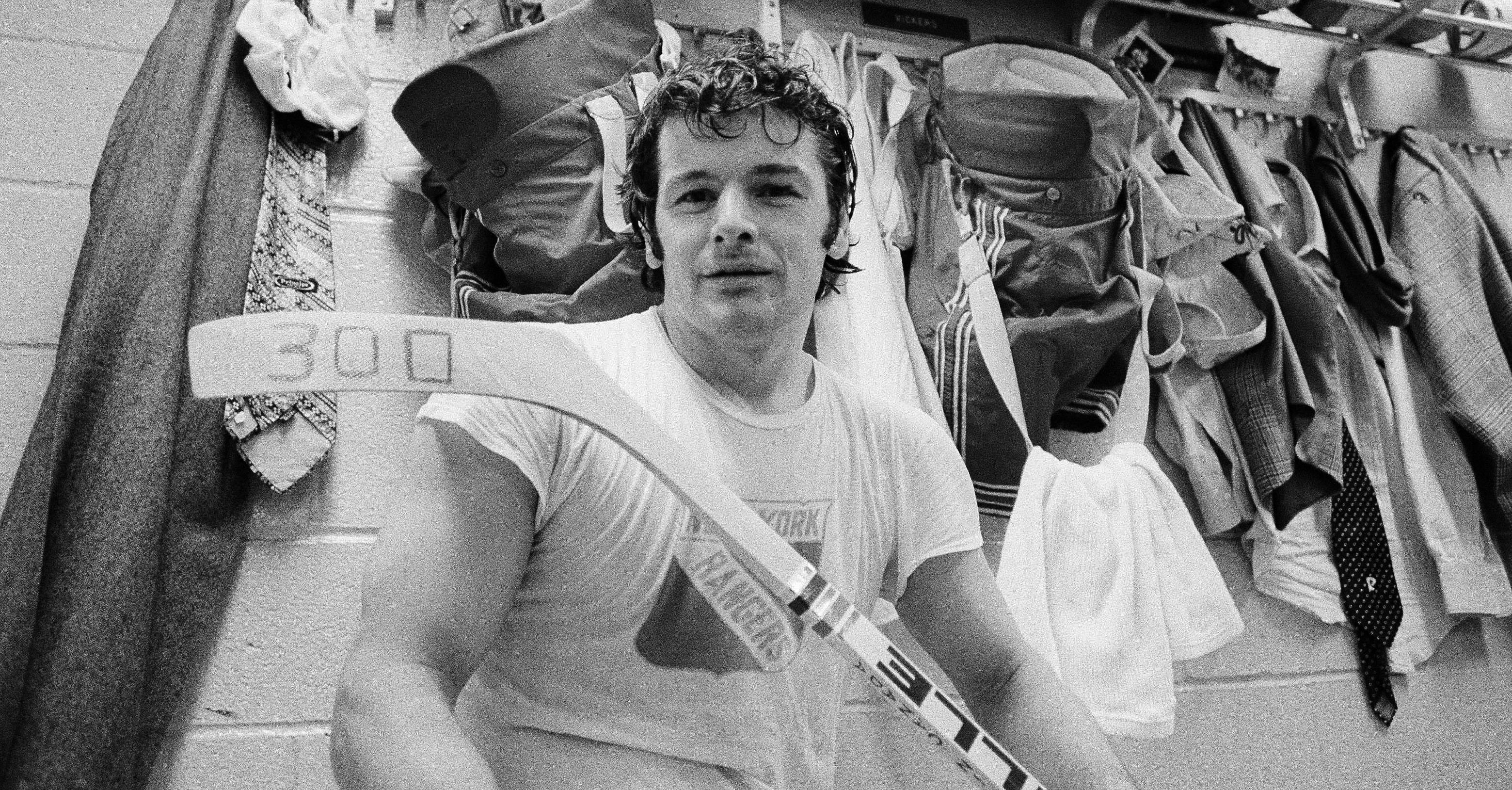[View More About the Rangers’ 90th Anniversary Season]
From Bill Cook, who starred on the Rangers‘ first Stanley Cup-winning team to Glenn Anderson, a key shooter on the 1994 Champions, the Blueshirts have been gifted with outstanding right wings.
Cramming all my favorites into a group of nine was just short of impossible because a few genuine worthies had to be omitted.
That said, here are my favorites — in alphabetical order. Let me know if you agree:
GLENN ANDERSON: When the Rangers won their last Stanley Cup in the 1993-94 season, general manager Neil Smith loaded up with a few Cup-winning members of the Edmonton Oilers. They included defenseman Kevin Lowe and right wing, Glenn Anderson.
Smith’s theory was that the likes of Lowe, and Anderson, as well as Mark Messier and Adam Graves, would help bring New York its first Stanley Cup since 1940 and he was right.
Over his lengthy NHL career, Anderson played on six Stanley Cup-winning teams and had five playoff overtime goals on his resume.
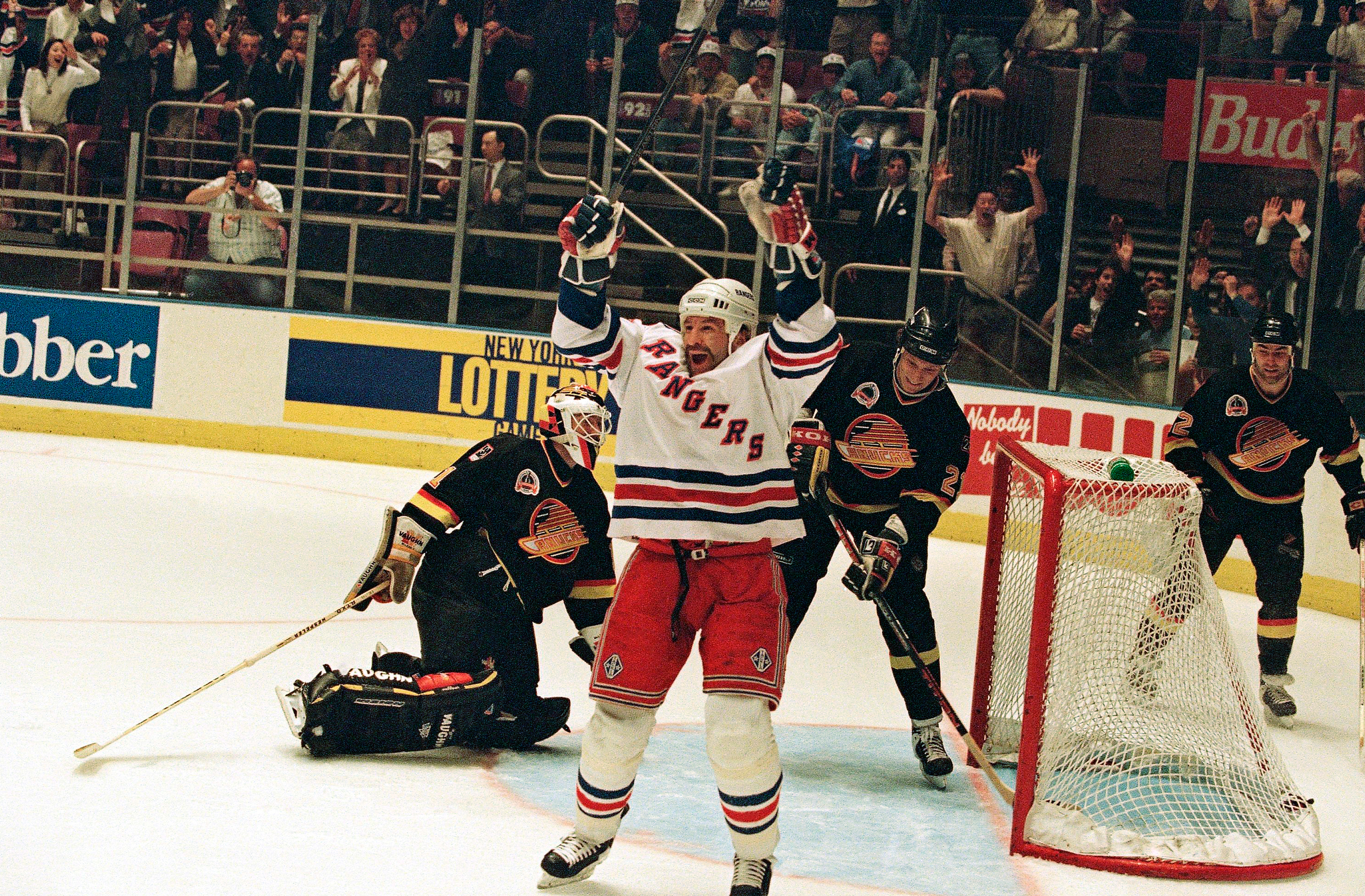
Glenn’s success formula included a blend of speed and hard shooting and this was evident during the ’94 playoffs when he amassed credentials that eventually led him to the Hockey Hall of Fame.
Equivalent to the current team: Mika Zibanejad
[Read: Stan’s Top-9 All-Time Left Wingers in Rangers History]
ANDY BATHGATE: The finest product of the Rangers’ post-WW2 Guelph, Ontario farm team in the Ontario Hockey League, Bathgate was the perfect role model among Blueshirt superstars. The Winnipeg, Manitoba native neither smoke nor drank, but packed a devastating shot. It was Andy’s backhand which smashed Montreal goalie Jacques Plante’s face causing the netminder to don a face mask for the first time in NHL history.
Bathgate played the right side, originally on a line with Larry Popein at center and Dean Prentice on left wing. Starting in the 1955-56 season, that unit helped propel the Rangers into the playoffs for three straight campaigns under coach Phil Watson. Eventually, Popein was replaced by Earl Ingarfield, who was better suited to Bathgate’s style.
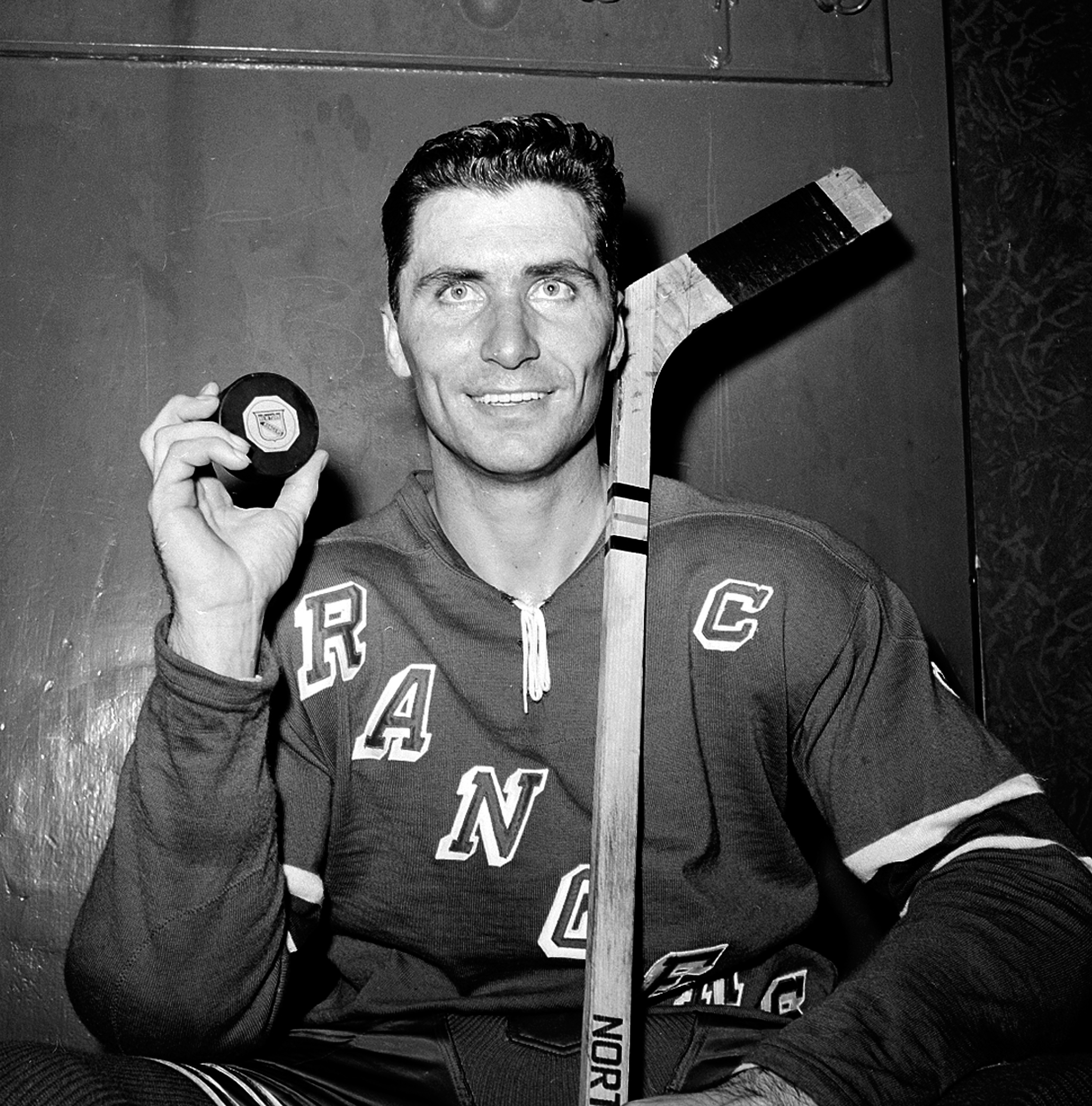
Bathgate might have been a Cup-winner in New York had the Rangers not been facing the five-time Cup-winning Montreal Canadians from 1956-1960. A captain for the New Yorkers, Andy won the Hart Trophy in 58′-59′ and scored 40 goals that year. He played in eight All-Star games and was inducted into the Hockey Hall of Fame in 1978.
Equivalent to current team: Rick Nash
MAC COLVILLE: The brothers Neil and Mac Colville were developed in the Rangers’ farm system during the mid-1930’s. Along with their left wing Alex Shibicky, they formed a potent trio called “The Bread Line.” While Neil and Alex were more crafty, artistic forwards, Mac did the heavy work along the boards and in the corners while supplementing that work with some commendable offense.
Mac was an integral part of the 1939-40 Stanley Cup winners and left the team to enlist in the Canadian armed forces along with his brother. Both returned to the Blueshirts’ lineup after the war although Neil became a defenseman. After a couple of seasons, Mac knew his legs were gone and he decided to retire in 1947.
According to Andrew Podnieks, author of “Players The Ultimate A-Z Guide of Anyone Who has Ever Played in the NHL,” “Mac and Neil had almost identical careers. Although Mac did not ascend the pantheon of greatness as his older brother Neil he was a key member of the Rangers bread line.”
Like Neil, he returned to the Rangers after the war but soon retired.
He became a coach for a year in Vancouver winning a championship before quitting.
Equivalent to current team: Chris Kreider
[Read: Stan’s Top-9 All-Time Rangers Centers List]
BILL COOK: Depending on how you judge contrasting hockey eras, Original Ranger Bill Cook was the best Blueshirt Right Wing of All-Time, give or take Rod Gilbert or Andy Bathgate. Like Mac Colville, Bill Cook shared stardom with his brother Fred, alias Bun Cook. Together with their center Frank Boucher, the trio comprised one of the most outstanding forward units in the history of the National Hockey League.
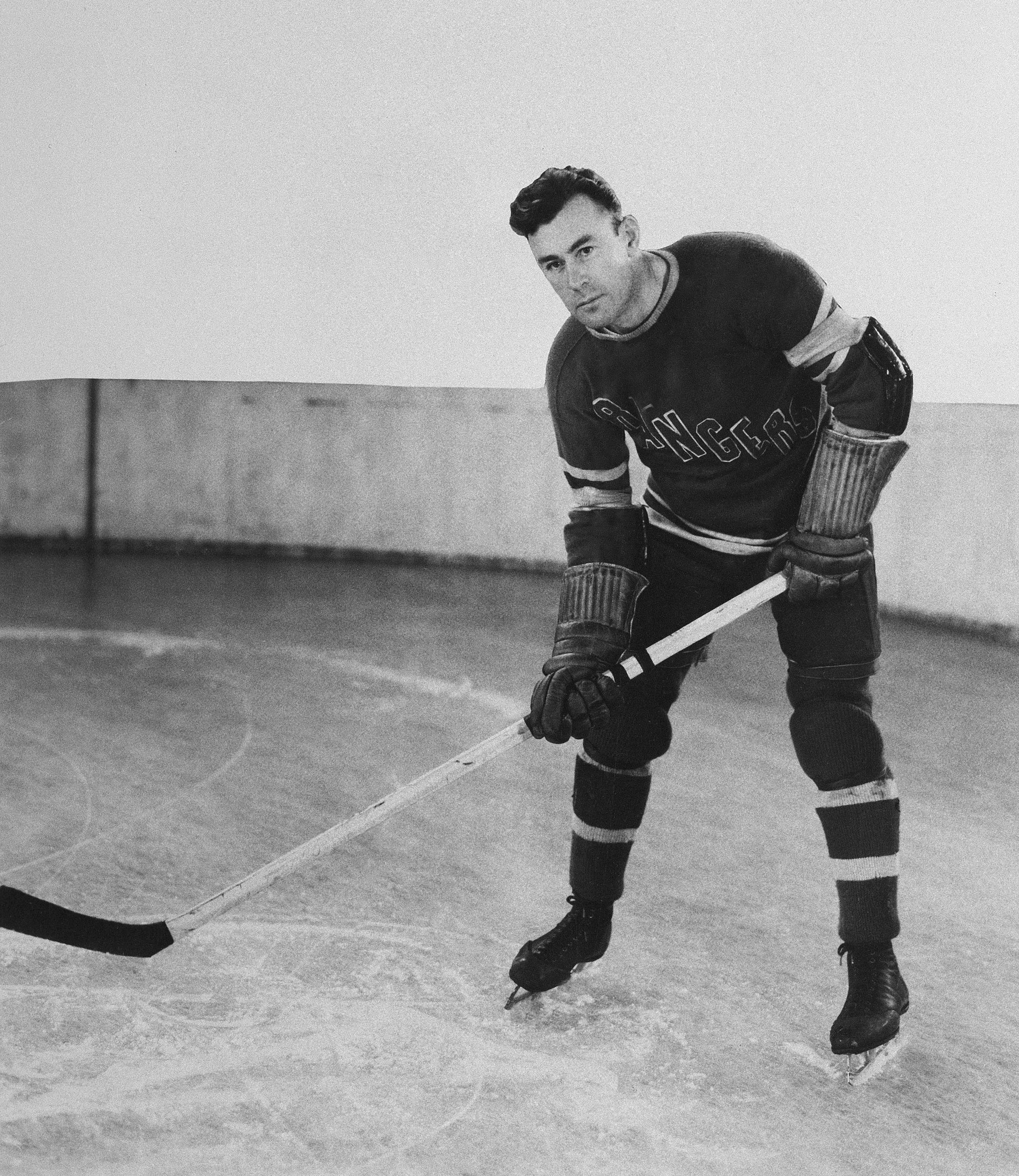
A World War I combat veteran, Cook was part of the original Rangers sextet that joined the NHL for the 1926-27 campaign. Led by captain Cook, the club required a mere two seasons before winning the Stanley Cup. Coach Lester Patrick relied on the Cook-Boucher line through another Cup win in 1933. They played together until 1937.
Perhaps the most amazing aspect of Bill Cook’s career is that he didn’t get an NHL job until he was 30 years old.
An artillery man with the Canadian armed forces from 1915 until the end of World War I, Bill fought in some of the most intense battles of the Great War. Once the war was over Cook played for Saskatoon Sheiks before signing with the Rangers in 1926.
Equivalent to current team: Mats Zuccarello
CECIL DILLON: A Toledo, Ohio native, Dillon was one of the first American-born NHL players, whose career spanned from 1930-42; he played for the Rangers until 1939. Cecil never missed a game during his stint with the Rangers. Throughout his career, he scored 160 regular-season goals and led the team in scoring during the 1935-36, 1936-37, and 1937-38 seasons, averaging about 34 points per season. Dillon was on the Stanley Cup-winning Rangers team in 1933, when the team bested the Maple Leafs three games to one.
Cecil played 409 regular-season games and 38 postseason games with the Blueshirts. The only other players to lead the team in scoring for three consecutive years were: Frank Boucher, Bill Cook, Andy Bathgate, Phil Esposito, and Wayne Gretzky. Dillon’s eight goals in the 1933 playoffs were, at the time, an NHL record. It would be a full decade before Don Grosso would match it, and two years after that for Maurice Richard to best it, scoring 12 goals in the playoffs.
Lester Patrick, the Rangers’ coach, said that Cecil was the perfect hockey player. A full page spread of Cecil ran in the Montreal Gazette in 1933 outlining his talents. Patrick gave him accolades for having minimal penalties and a “deadly close range shot.”
Cecil won the following awards: NHL first All-Star Team 1937-38, NHL second All-Star Team 1935-36, 1936-37, NHL All-Star game 1937.
Equivalent to current team: Kevin Hayes
[Read: Stan’s Top-9 All-Time Rangers Goalie List]
ROD GILBERT: Rod Gilbert’s career almost ended before it started. Playing for the Guelph Royals in the Ontario Hockey Association, he skidded on an ice-cream container top thrown to the ice by a fan and injured his back. A few days later, an opponent leveled him with a strong check, and Gilbert fell to the ice, his back broken. Happily, Rod’s story was uphill to fame after that.
In 1971-72, he hit for 43 goals, finished fifth in the NHL scoring race, and was named right wing on the First All-Star team. He was the first Ranger in eight years to earn a first-team nomination. In 1974, Gilbert passed Andy Bathgate as the Rangers all-time leading scorer. His milestone goal was celebrated by a five-minute, deafening ovation.
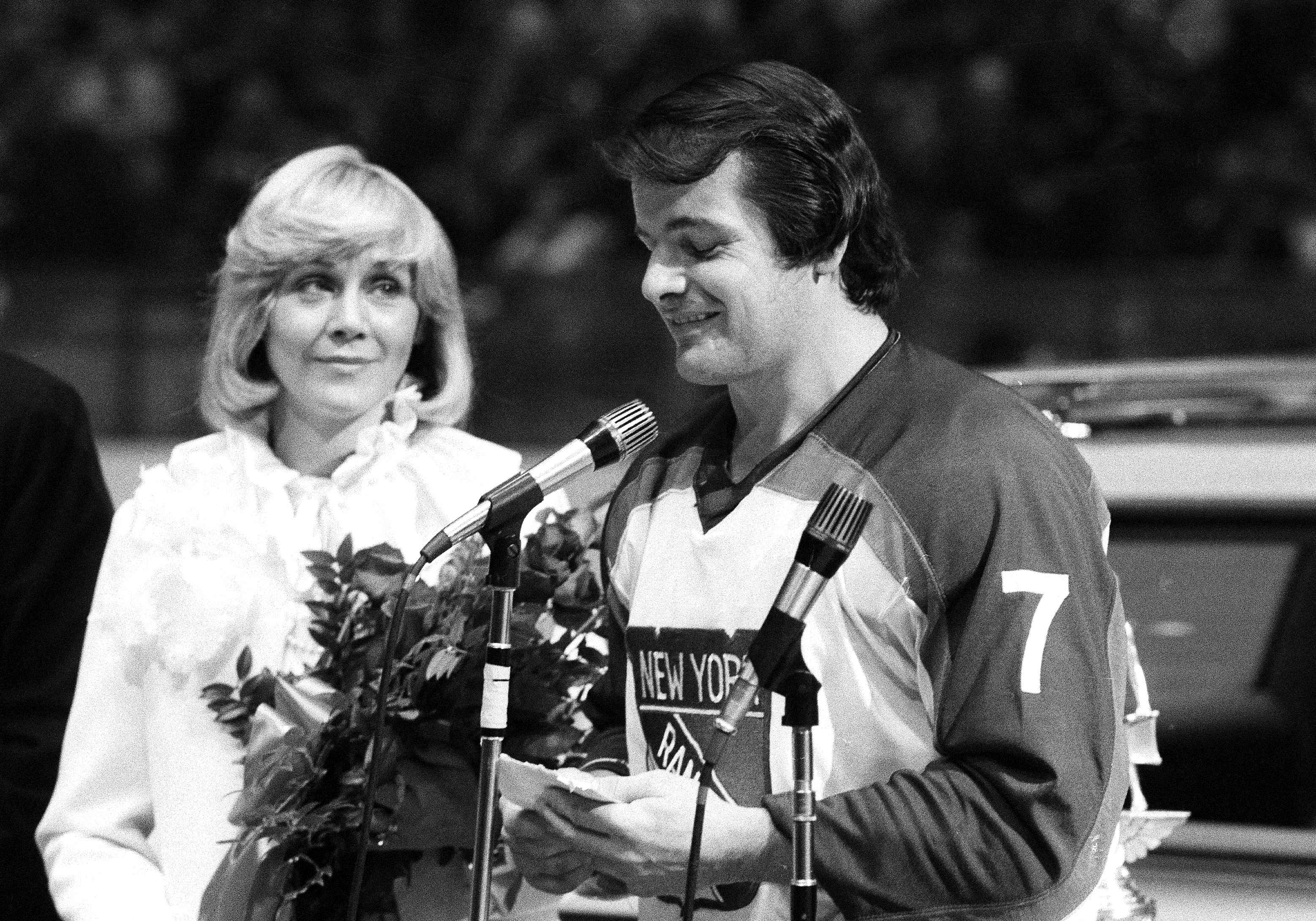
Gilbert teamed with Jean Ratelle and Vic Hadfield to form the Rangers number one line, the GAG Line (goal-a-game), which amassed 139 goals and 312 points in 1971-72.
Gilbert retired in 1978 and moved to the front office. Rod remained a popular member of the Rangers organization, admirably serving the club as an ambassador into the new century. He was inducted into the Hockey Hall of Fame in 1982.
Equivalent to current team: J.T. Miller
ANDY HEBENTON: The Rangers boasted a couple of “Iron Men” including Original Ranger Murray Murdoch who starred on two New York Stanley Cup-Winners in 1928 and 1933.
No less significant was Andy Hebenton who gained the nickname “Spud” because he never stopped loving a dish of potatoes.
Andy credited his potato diet for his longevity which included nine NHL seasons without missing a single game.
A star in the Western Hockey League with the Tacoma Rockets, Hebenton was signed by Rangers general manager Murray Patrick for the 1955-56 season, which coincided with the arrival of coach Phil Watson who guided the Blueshirts into the playoffs for three straight campaigns.
An exceptionally clean player, Hebenton won the Lady Byng trophy in 1956-57 — in which he starred alongside such Hall of Famers as Andy Bathgate, Bill Gadsby, and Lorne “Gump” Worsley.
After Hebenton’s eighth and final year with the Blueshirts, he finished his career with the Boston Bruins. Following his NHL stint Andy played 12 seasons in the Western Hockey League where he was a six-time winner of the WHL’s version of the Lady Byng.
Hebenton is an honored member of the Manitoba Hockey Hall of Fame.
Equivalent to current team: Michael Grabner
[Read: Stan’s Top-9 Defensemen in Rangers History]
WALLY HERGESHEIMER: During the New York Rangers’ darkest days in the early 1950’s, the most consistent bright light was smallish right winger Wally Hergesheimer, who broke into the NHL with several handicaps. He was a relatively slow skater; he had lost two fingers on his right hand as a result of a punch press accident; and had lacked a particularly hard shot.
But Wally had a surplus of good humor and guts. Dubbed a “garbage collector” because of his knack of scoring goals from rebounds near the crease, “Hergie,” as he was known, led the Rangers in scoring during 1952-53.
He was from a breed of outstanding players developed by the minor league AHL Cleveland Barrons that included defenseman Hy Buller and Hall of Fame goalie Johnny Bauer.
Equivalent to current team: Derek Stepan
BRYAN HEXTALL: What Bill Cook meant to the original Rangers as a first-class right wing and Cecil Dillon did later on in the 1930’s, Bryan Hextall equaled when he graduated from the Blueshirt farm system to the big club in 1936-37. Hex was a lifetime Ranger having spent 11 years with the New Yorkers. For most of that time, his linemates also were Rangers farm team graduates including center Phil Watson and left wing Lynn Patrick.
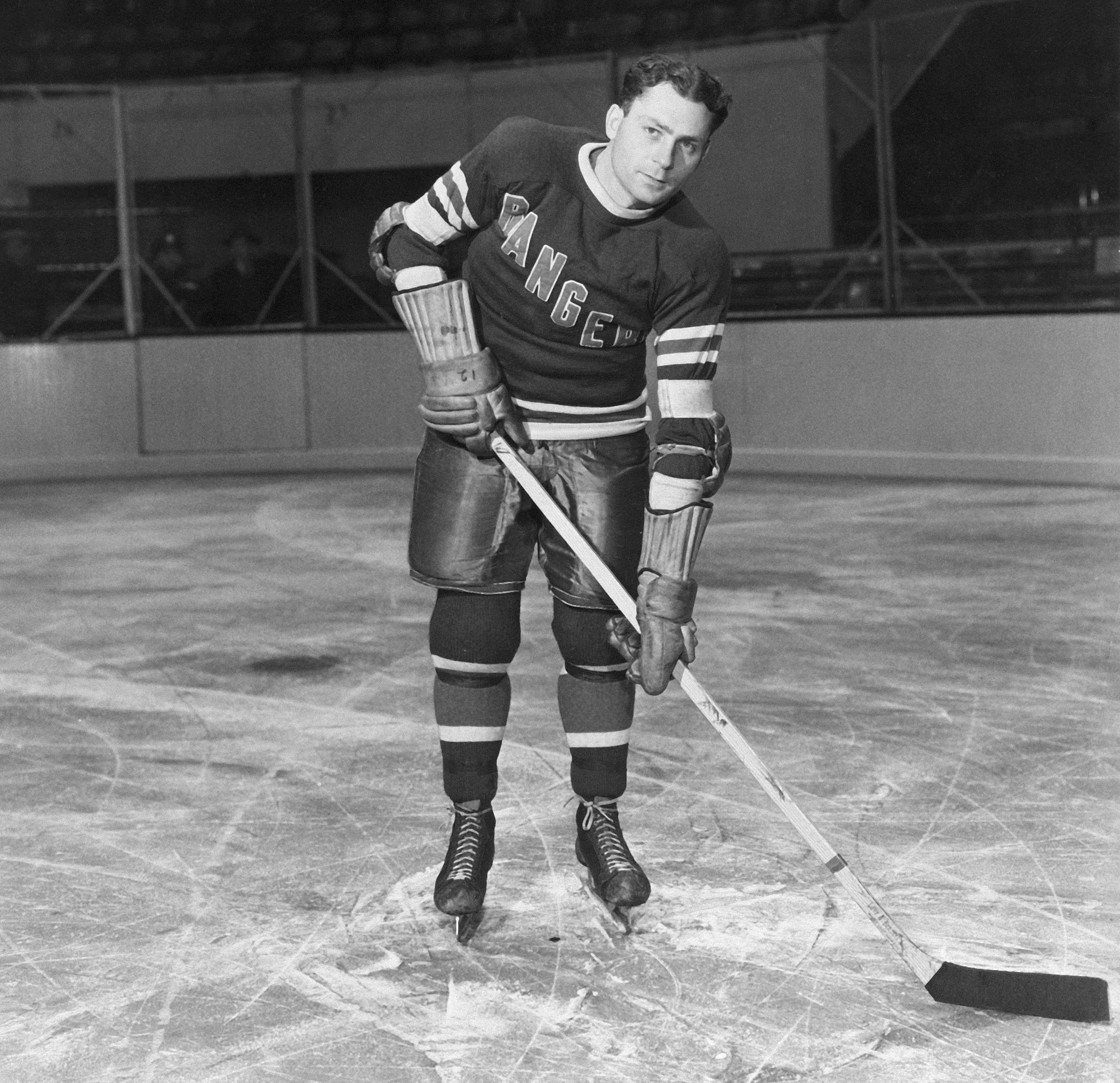
Hextall twice led the NHL in goal-scoring and once in total points (56 in 1942). He had a terrific burst of speed, was appropriately tough, and could stickhandle with the best of them. Like the Cooks-Boucher line, the Hextall-Watson-Patrick unit dazzled the enemy with their stick work until the outbreak of World War II depleted their ranks.
Bryan scored the fateful overtime goal in 1940 against the Toronto Maple Leafs that would give the Rangers their last Stanley Cup until 1994.
He played last in 1948-49, in the American Hockey League, but spawned a legacy of son Bryan Jr. and grandson Ron becoming NHL players.
Bryan won the following awards: NHL scoring leader 1941-42, NHL first All-Star team for three consecutive seasons 1939-40, 1940-41, 1941-42, NHL second All-Star team in 1942-43, Rangers MVP 1943-44, Hockey Hall of Fame 1969.
Equivalent to current team: Jimmy Vesey
